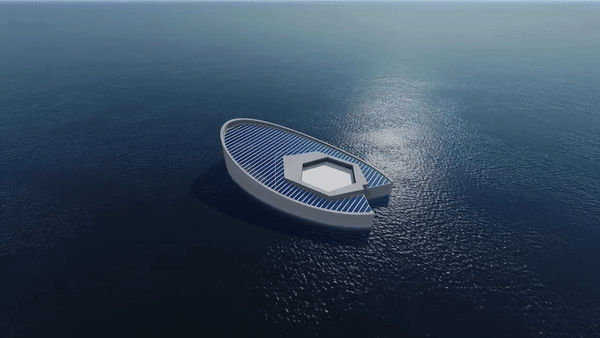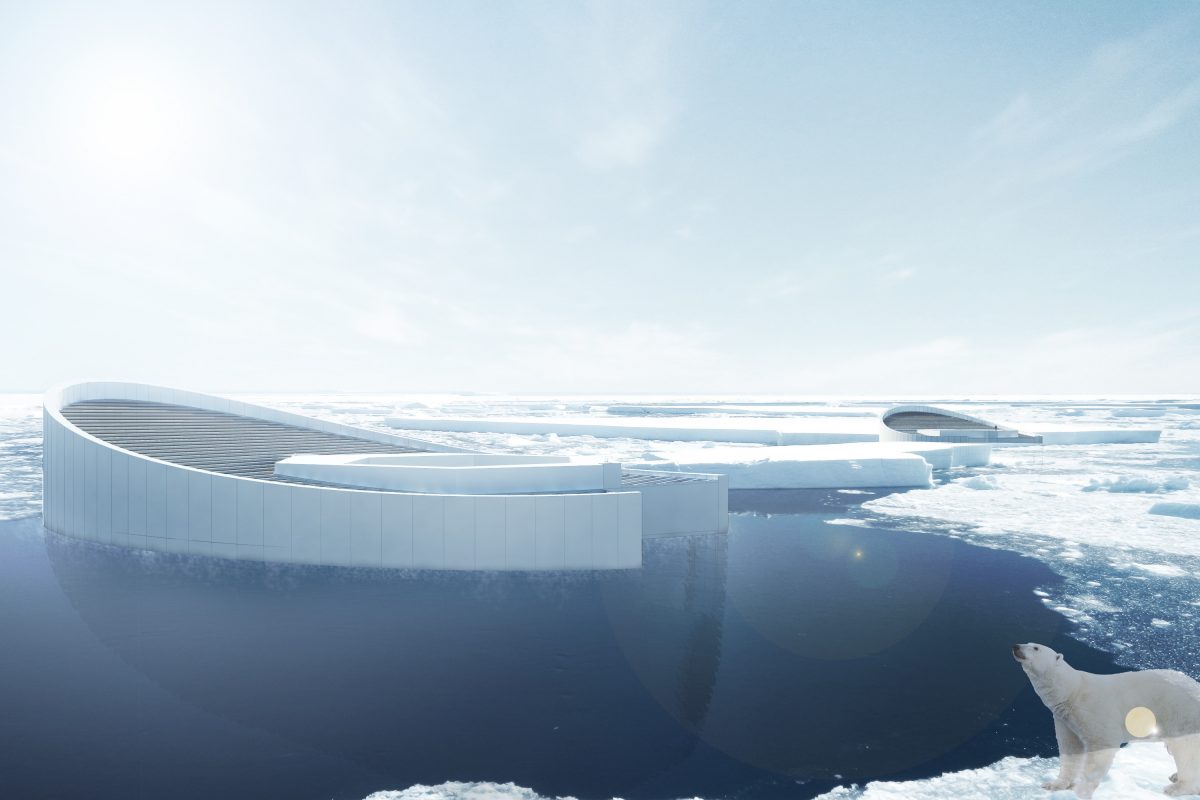These Giant Submarines Are Designed to Re-Freeze the Arctic

Architects: Showcase your next project through Architizer and sign up for our inspirational newsletter.
A group of designers led by Faris Rajak Kotahatuhaha took second prize at the Association of Siamese Architects International Design Competition for a concept to create icebergs by refreezing Arctic sea water. Tasked with developing radical, unanticipated, transformative or “uncanny” ideas for sustainable architecture, Kotahatuhaha’s team took on the challenge of combating the impacts of climate change in the vulnerable Arctic region through geoengineering.

They created a prototype of an ice-making submarine that would submerge below the ocean surface, fill with seawater, rise back to the surface, and then contain the captured water in a hexagon-shaped well. The process of reverse osmosis would be conducted in order to desalinate the water so it could freeze faster.
The remaining concentrated salt would be dumped back into the sea leaving the resulting fresh water to freeze within the hexagonal cast. Turbines would be used to blast the water with cold air in order to accelerate the freezing process.

The submarines connecting newly formed icebergs to one another; image via Faris, Rajak, Kotahatuhaha
After a month, the vessel would sink into the water to release the newly formed 82-foot-wide, 16-foot-thick hexagonal ice mass, or “ice baby,” as the team calls it. Finally, the submarine would push the ice baby next to other recently formed icebergs in order to extend an ever-expanding ice field.
Kotahatuhaha and his team believe that restoring the polar ecosystem in this way could effectively prevent issues relating to climate change-induced polar melting. This proactive approach is in response to their belief that too much emphasis is being placed on constructing reactionary solutions to rising sea levels, such as flood defense systems and sea walls.

Rendering of the submarine in use; image via Faris, Rajak, Kotahatuhaha
However, even their proposal, though radical and comprehensive, may only scratch the surface when attempting to impact the rate of sea level rise. Though there are a plethora of factors that contribute to climate change, sea level rise is mainly due to the melting of land ice, such as glaciers and ice sheets.
In conversation with NBC News, Mark Serreze, director of the University of Colorado’s National Snow and Ice Data Center, asserts that melting sea ice does not directly contribute to sea level rise because it’s already in the ocean, regardless of whether it’s liquid or solid. Sea ice, however, does play a critical role in reflecting the warmth of sunlight away and it provides habitats for polar organisms, so there are multiple potential benefits of the concept.

The submarine’s hexagonal tank; image via Faris, Rajak, Kotahatuhaha
Questions over the idea’s feasibility, scale and ability to operate without the power of fossil fuels must surely be answered before a project like this can be realized. Furthermore, regardless of how effective geoengineering can be, it, in itself, is a reactionary response when the root problem is excessive greenhouse-gas emissions. We look forward to seeing how Kotahatuhaha can further develop these ideas.
Architects: Showcase your next project through Architizer and sign up for our inspirational newsletter.
The post These Giant Submarines Are Designed to Re-Freeze the Arctic appeared first on Journal.
, Nathaniel Bahadursingh, read more Journal http://bit.ly/2MNAkYi
Yorumlar
Yorum Gönder